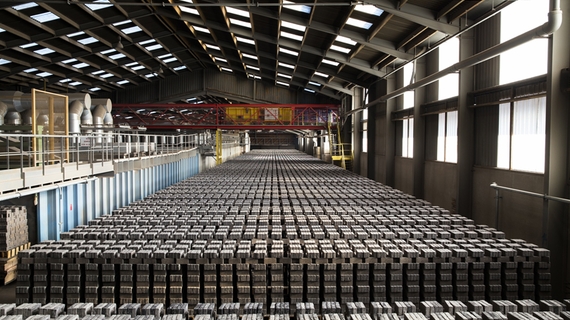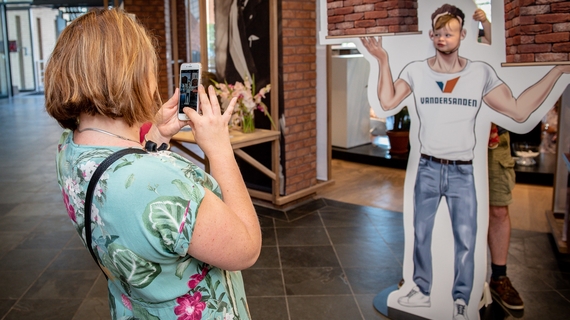Tolkamer has the most environmentally friendly paver kiln in Europe
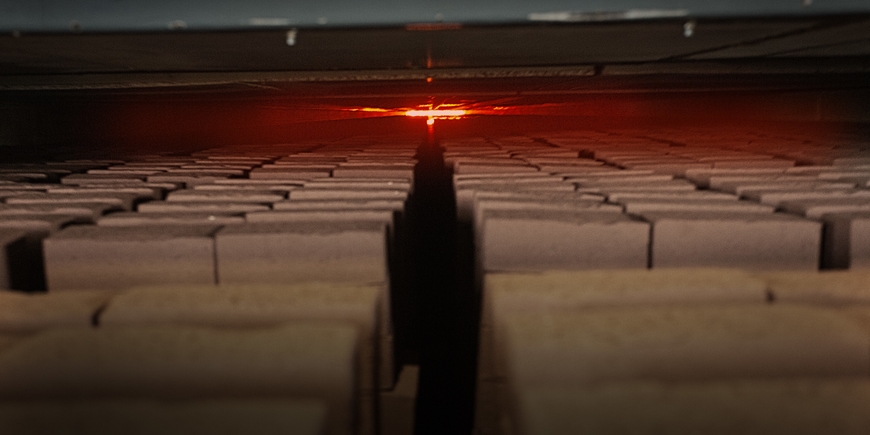
Our new paver kiln in Tolkamer reduces the CO2 emissions of the entire production process by 25%. Almost nowhere else in Europe produces pavers in a more environmentally friendly way. The kiln is part of our vision to roll out a carbon-neutral brick production process by 2050. Below, Ton Bouma and Sander Baas, ambassadors of our carbon-neutral vision, guide us through the main scientific facts and figures about our new kiln.
25% lower CO2 emissions
No one is better placed to talk about the new kiln at our factory in Tolkamer than Ton Bouma: he was literally born on the factory site. The farm owned by his parents once stood on what is now 160 hectares of land rewilded after being used as a clay pit. Up until around a decade ago, he was still living at the entry gate to the factory, and he has been working here for no fewer than forty-seven years, most recently as the factory's plant manager. Before hanging up his hi-vis for the final time, he took charge of the construction of the new tunnel kiln together with his successor, Sander Baas.
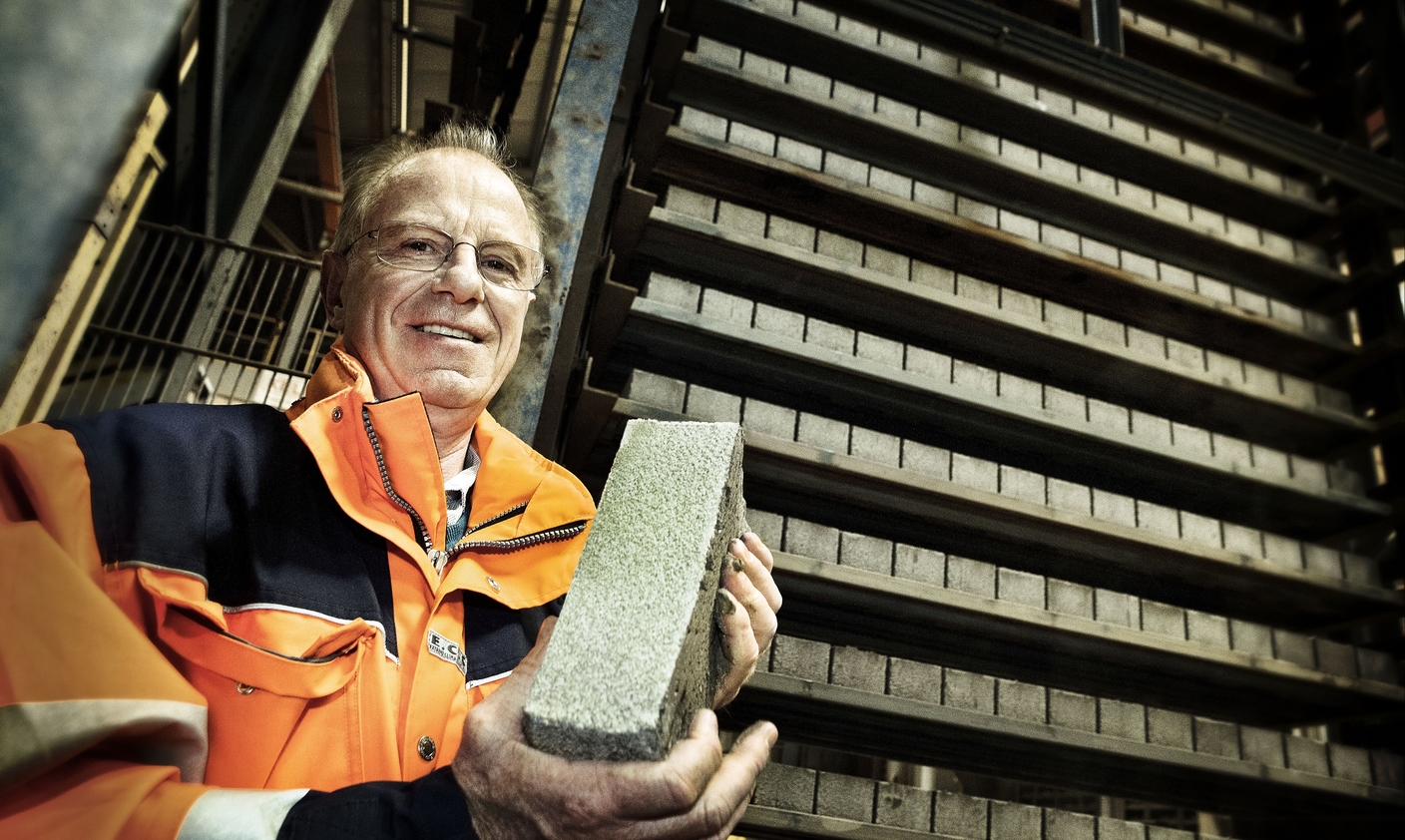
When the kilns were built 30 years ago, energy consumption wasn't all that much of an issue. But times change, and Vandersanden never likes to stand still. For that reason, it was high time to start thinking about a new, energy-efficient kiln.
Even more favourable lifecycle analysis
Ton Bouma: "Up until recently, Tolkamer had three tunnel kilns that consumed a lot of energy, with a major impact on the environment as a result.
As the volume of energy required to produce pavers in the new kiln is around 25% lower, the environmental performance of this product is now much improved across its entire lifecycle. Drying and firing pavers takes a lot of energy, so any savings we can make at this point have a major impact on the rest of their lifecycle. That lifecycle analysis is already favourable, as pavers have an average lifespan of 135 years, and approximately 90% of them is reused. Of course, that doesn't take away the fact that there are still ways to reduce their environmental impact even further."
Ton Bouma: "When the kilns were built 30 years ago, energy consumption wasn't all that much of an issue. But times change, and Vandersanden never likes to stand still. For that reason, it was high time to start thinking about a new, energy-efficient kiln."
A 240-metre-long kiln
The solution turned out to be an alternative design that is much longer than most kilns — and much better insulated.
Ton Bouma: "Coming in at 240 metres, our new kiln is no less than 60 metres longer than a conventional kiln. By increasing the stacking height by 80 cm compared to the old kilns, the production capacity of this single kiln is the same as that of our three old kilns combined."
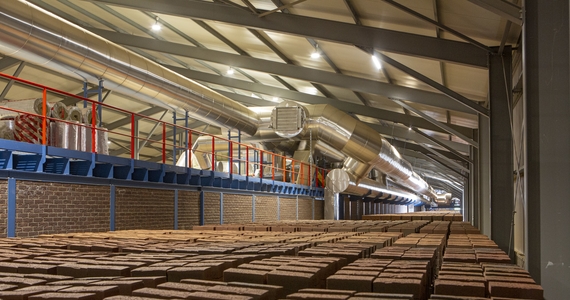
High quality and better insulated
"We opted to have a longer kiln built. The heating and cooling process is more gradual as a result, which reduces our air consumption", Sander Baas comments. "The production capacity remains the same. Sustainability is an absolute priority to us, and with that in mind, we constantly monitor whether our production sites are producing sustainably".
Thanks to the new tunnel kiln, the site now emits significantly less CO2. The walls, deck and pipework of the kiln are all fitted with high-quality and extremely thick layers of insulation, so that the energy consumed is put to optimal use.
Sander Baas: "A tunnel kiln by itself is not a new concept, but the latest technologies in terms of gas burners and the way in which we insulated the kiln are. Vandersanden has invested no less than 12 million euros in the construction of the kiln, and a further 4 million euros in the fine-tuning process — which took six months. It took a lot of teamwork, including with our supplier — there are only a few kiln builders remaining in the world, so this really is a specialist job."
Coming in at 240 metres, our new kiln is no less than 60 metres longer than a conventional kiln. By increasing the stacking height by 80 cm compared to the old kilns, the production capacity of this single kiln is the same as that of our three old kilns combined.
A more sustainable drying process
Here at Vandersanden, we think about sustainability across the entire line. In fact, it's not firing pavers that uses the most energy; it's the drying process instead. When constructing the new kiln, a lot of thought went into ways to optimise the drying process in terms of energy consumption. For example, we're now focusing strongly on the drying rooms, which use residual heat from the kilns.
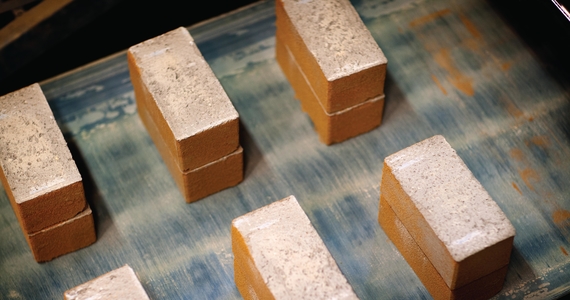
"We will be using all the residual heat generated by the kiln to dry the pavers before they are fired", Sander Baas explains. If we manage to make the drying process more sustainable, the entire paver production process will become even more sustainable too."
All in all, Vandersanden has been able to reduce the CO2 emissions of the production process at Tolkamer by 25 percent. An impressive feat — but Vandersanden wouldn't be Vandersanden if it had any intention of stopping there. Carbon-neutral production is the eventual aim, and to achieve that, Vandersanden is already casting its gaze to the future — several decades ahead, in fact. Ton Bouma: "We are looking at all aspects of our production site to see if we can consume less energy. Solar panels will be installed across the entire length of the kiln roof, for example, and energy savings are a factor for consideration when buying new machines. On top of that, we have also submitted an application to reopen the loading/unloading quay along the canal directly adjacent to the factory, as that would further reduce the amount of road transport trips required."


